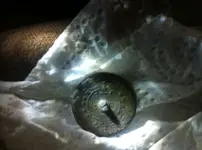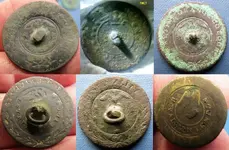gsxraddict
Hero Member
- Joined
- Sep 21, 2005
- Messages
- 629
- Reaction score
- 413
- Golden Thread
- 0
- Location
- Resaca, GA
- Detector(s) used
- XP Deus, Minelab Equinox 800, Whites V3i
- Primary Interest:
- Relic Hunting
I see an eagle sitting with his head looking over his shoulder. I see stars down both sides. I see letters on the bottom, but can't make them out.
I found this in my yard today. I was confident there was nothing here, then my wife took my detector out to start learning how to use it. I got a good reading and told her we would dig this nickle.
Can anyone tell me time period or anything about it?

I found this in my yard today. I was confident there was nothing here, then my wife took my detector out to start learning how to use it. I got a good reading and told her we would dig this nickle.
Can anyone tell me time period or anything about it?

Last edited:




